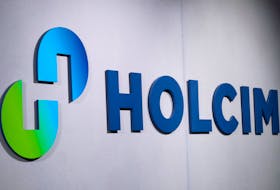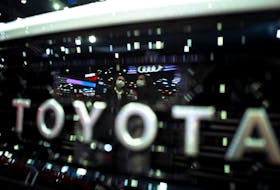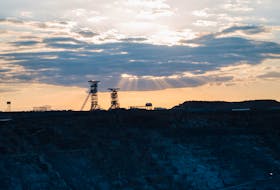Lafarge has yet to complete its application for industrial approval of a one-year pilot project to burn discarded tires as kiln fuel at its plant near Brookfield, even as it continues to prepare for the project.
“Nova Scotia Environment and Lafarge are taking the time to get it right and to ensure all community concerns are addressed,” said Robert Cumming, environmental director for Lafarge Canada.
But an Environment Department spokesman said Tuesday that the Lafarge application is incomplete.
“The department received the application for industrial approval on Nov. 10,” said Bruce Nunn. “We began a review of the application but in February we determined more information was required. We have requested that information from the proponent and have not yet received all of it. Once the application has been deemed to be complete, we will have 26 days to make a decision on the industrial approval.”
Lafarge seemed to clear a major hurdle with the decision handed down by a Nova Scotia Supreme Court judge more than three months ago to dismiss the complaints of a residents group who opposed the use of some 350,000 discarded tires as fuel in a pilot project that is to be conducted in conjunction with a Dalhousie University research team.
The Environment Department approved the company’s environmental assessment a year ago. Six weeks after the July 2017 approval, the residents group filed notice with the Supreme Court for a judicial review of then-minister Iain Rankin’s decision. The group claimed the minister failed to properly consult the public,
to protect human health and to prevent pollution.
The review was held in March and Justice James Chipman ruled that the environment minister’s approval of the pilot project was reasonable, that the process considered the risks, and that the minister was satisfied that any significant adverse environmental effects could be mitigated.
The company predicts that it will reduce carbon emissions by 30 per cent for every tonne of coal and petcoke fuel replaced by tires. It also predicts a 10 to 15 per cent reduction in the nitrogen oxides that form smog and acid rain and constitute most air pollutants. The company expects “benign” changes in other emissions.
The residents group says that burning tires will emit dangerous, inhalable fine particulate matter, toxic metals, and cancer-causing chemicals.
Fred Blois, a spokesman for the residents group, said Tuesday that he is puzzled by the delay in the industrial approval.
“We will prepare at that time to do something,” Blois said, if the department gives its industrialapproval. “We’ll just see how it is released and what’s in it and go from there. We haven’t given up on it.”
There are about one million tires discarded every year in the province. Divert Nova Scotia, a not-for-profit corporation that operates at arm’s-length from government, picks up the $4.50 per tire environmental fee that Nova Scotia consumers pay for tires at retail outlets. Through its tire management program, Divert had been paying a $200 per tonne fee to C& D Recycling in Goodwood for taking the discarded tires and shredding them into aggregate that can be used for highways, retaining walls, drainage, foundation backfilling and other products.
Lafarge’s bid landed the cement company 30 per cent of the province’s discarded tires over a
five-year period. The company will be paid $105 per tonne by Divert to take the 350,000 tires each year, if the pilot project is extended.
Cumming said the company is working on plant upgrades and the earliest that tires could be used as fuel would be late fall, possibly not starting until early in 2019.
“The continuous emissions monitoring system was installed last fall,” Cumming said of the $800,000 system. “It’s operating right now. Over 99 per cent of the emissions from the plant are now continuously monitored and recorded. It gives us a really effective way, when we start using scrap tires, to ensure that things are operating normally. . . . We are actually anticipating that emissions will go down with the use of scrap tires. That’s been our experience at other cement plants.”
Cumming said the company will not receive tires from Divert until it is ready to burn them. The company has finished its engineering work for the project and has begun work on a $2-million construction phase that will allow it to introduce whole tires at midkiln.
“We will be able to introduce those scrap tires in a very safe, controlled manner because we’ll be able to able to monitor what’s happening in real time. Once we optimize it, we’ll have significant emissions reductions, and we’ll be able to bring in Dalhousie University to do all the statistical analysis and to come up with a report that we will be sharing with the public and Nova Scotia Environment.”








